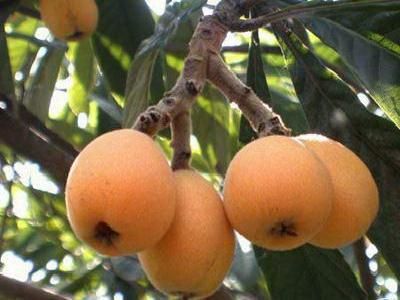Putian Temple, one of the four famous fruits in Putian, is the geographical indication product of Putian City. With a long history of cultivation, the single fruit is the largest in China and the most advanced in cultivation techniques. It is famous for its special characteristics such as large fruit, bright appearance, sweet, sweet, early ripening, and storage and transportation. Changtai Town, the main producing area, is known as “China’s first townshipâ€. ". There are more than 100 varieties of Putian wolfberry, including "Liberation Bell", "Changhong No. 3", "Selection No. 1", "Early Bell No. 6", "White Pear" and so on. The single fruit is China's largest (liberation bell) The largest fruit weight is 172 grams, which is the highest in the world. The most advanced cultivation technology is Changtai Town in the main producing area. "Liberation Bell" was selected from the "Big Clock" of Xiyinli, Yingxiang Street, Chengxiang District, Putian City, Fujian Province. It was named after the discovery in the liberation year of Putian in 1949. Its largest single fruit weight can reach 172 grams. It was awarded the gold medal at the International Agricultural Exhibition held in West Germany in 1954 and is therefore known as the "King of Kings." "Liberation bell" banyan tree strong, strong branches, strong resistance, good habits, high yield, fruit obovate or long obovate (pear-shaped), orange-red skin, easy to peel, medium thick, resistant to storage and transportation; average fruit Weight 70-80g. According to the determination of Fujian Academy of Agricultural Sciences, the thickness of flesh is 0.93cm, the edible rate is more than 71.46%, the soluble solids are 11.1-12%, the acid content is 0.51%, and the vitamin is 65.72mg/100g flesh. The local ripening period of Putian is on the upper and middle of May. . Quality and technical requirements (a) Variety. Liberation Bell, White Pear, Ukrainian White, Early Bell No. 6. (b) site conditions. Within the protected area, the altitude is less than 500m; soil thickness is greater than 0.8m, pH value is 5.0 to 6.5, soil is loose and fertile, organic matter content is ≥2%, less than 2% is improved year by year, and drainage and irrigation are convenient. (c) Cultivation and management. 1. Selection of production bases: Select slopes below 25° to build gardens, with slopes facing east or southeast. 2. Seedling raising: Using 1 year to 2 years old, the grafted seedlings with grafts with a roughness of 0.6 cm or more are used for rootstock grafting. 3. Colonization: Planting time ranges from October to March of the following year. The plant spacing is 4.5m to 5m, and the row spacing is slightly wider than the plant spacing or may be determined according to the topography. 4. Crown Management: (1) Pruning: The juvenile tree is cultivated into a funky or double cup-shaped, canopy open, dwarfed and light-transparent canopy. (2) Sparse spikes and sparse buds: Sparse spikes are carried out when flower spikes and pedicels start to separate. Sparse and vegetative branches are 1:1 to 2 after sparse; Go inside and out, stay on; the flower spikes left are selected to leave the middle down to facilitate the bagging of the 3 to 5 fulcrum, and the rest are removed. (3) Thinning of fruit: After fruiting, the longitudinal diameter of young fruit is 1.5cm to 2.5cm. The liberation bell, early bell number 6 leaves 3 to 4 per ear, white pear, black peony leave 4 to 5 per panicle. (4) Bagging: After fruit thinning, the fruit should be packaged with 70g/m2 to 90g/m2 kraft paper (bags). 5, fertilization management: The main organic fertilizer, with the appropriate application of chemical fertilizers. Each plant applies 0.4kg to 0.8kg of nitrogen throughout the year, organic fertilizer usage accounts for more than 50%, N:P:K ratio is 1.0:0.6:1.0 to 1.2, respectively, after fruit-picking, heading, and young-fruit application. Among them, post-harvest fertilizer accounted for 40%, spike panicles accounted for 40%, and young fruits accounted for 20%. 6. Environment and safety requirements: The use of pesticides, fertilizers, etc. must comply with the relevant national regulations and must not pollute the environment. (d) Harvesting. Outward transportation, storage, and processing require 80% maturity, and the fruits are light orange-yellow. (five) quality characteristics. 1, sensory characteristics. The fruit is large, the fruit shape is neat and plump, the fruit of the same grade is uniform, the fruit surface is of good color, bright, the fruit powder is thick, the hair is more, the rust is less, the taste is sweet, there is aroma. 2, physical and chemical indicators. (1) The weight of the liberation bell is ≥ 60g, the early fruit weight of the early bell is ≥ 50g, the soluble solids of the liberation bell, the early bell is ≥ 10%, the ratio of the solid and acid ≥ 16:1, and the edible rate is ≥ 70%. (2) White pear weight ≥ 40g, black wolfberry white fruit weight ≥ 50g; white pear, black peony white soluble solids ≥ 11%, solid acid ratio ≥ 20:1, edible rate ≥ 68%. 3, safety requirements: product safety indicators must meet the state's relevant provisions of similar products. Lactobacillus Acidophilus,Lactobacillus Acidophilus Powder,Lactobacillus Acidophilus Probiotic,Lactobacillus Acidophilus Supplements Jiangsu Biodep Biotechnology Co. ,Ltd. , https://www.mbioda.com